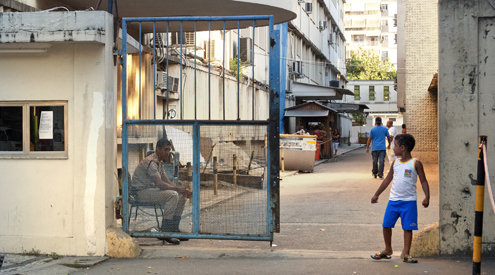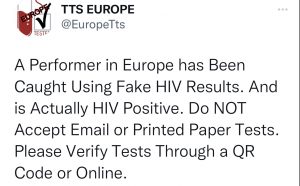RIO DE JANEIRO — In the 10 years that Dr. Anna Cabral has been treating AIDS patients, she said, she’s seen a change in the people who come to her clinic in a large public hospital.

Where once a diagnosis would fill them with terror, said Cabral, a teaching doctor at Pedro Ernesto University Hospital in Rio de Janeiro, today they have hope.
An AIDS diagnosis is no longer a death sentence in Rio de Janeiro, as the variety and quality of treatments continue to improve, thanks largely to a national treatment and prevention program that calls for near-universal distribution of medication. But the controversial program – the government broke international patent laws to mass-produce the drugs at a lower cost and recruited sex workers to help distribute condoms – may not survive for long, experts say.
“We have progressed in constructing a public health system oriented in these principles (of social justice and universality), but at this moment, there is a crisis,” said Veriano Terto, a psychologist who specializes in public health and a member of the coordination staff for the Brazilian Interdisciplinary AIDS Association.
AIDS activists fear that costs will rise for the Brazilian government as patients on the life-saving treatment live longer than they did in the past, according to the U.S. Agency for International Development and the Joint United Nations Program on HIV/AIDS. Richard Parker, an American medical anthropologist and the president of the Brazilian Interdisciplinary AIDS Association, also says there’s less support from the government under President Dilma Rousseff than there was under her predecessor, Luiz Inacio Lula da Silva, better known as Lula.
The result, Parker said, is “destructuring of what was a great program.”
“The issue is that Brazil had, clearly, what was a model for the response to AIDS in the developing world,” he said. “That model program is now in jeopardy.”
The first case of AIDS in Brazil was recorded in 1982, and since then, the country has established a number of policies in AIDS treatment and prevention. In 1992, the World Bank predicted that 1.2 million Brazilians would be infected with AIDS by the year 2002. In 2007, the U.N. estimated the number to be 620,000 – half the prediction.
Much as in the United States with Rock Hudson, it took a celebrity to bring the AIDS issue to public attention, Cabral said. The Rio-based singer Agenor Miranda Araujo Neto, known by the stage name Cazuza, publicly declared his HIV status in 1989. He died a year later. In 1991, Brazilian health officials began to distribute free azidothymidine treatments, better known as AZT, to AIDS patients.
By the mid-1990s, more effective and powerful antiretroviral therapies replaced the older treatments, and in 1996 Brazil declared that it would offer free antiretroviral treatment to all citizens with AIDS. Parker said getting the law passed was the major victory of that generation of the AIDS movement.
“It took a number of years and pressure for the law to take effect,” he said.
In 2007, in a move that would anger some of Brazil’s allies and drug companies, Lula announced that the country would import a lower-cost version of one of the antiretroviral drugs. He signed a so-called compulsory license for the drug efavirenz – originally developed by the U.S. drug giant Merck – which Brazil began to produce more cheaply. Drug-company trade groups have denounced the use of compulsory licenses, saying they reduce the incentive for companies to develop new life-saving treatments.
Brazil has been home to new and innovative ways to spread awareness of sexual health issues and to promote safe sex practices, Parker said. In one case, the Brazilian Interdisciplinary AIDS Association produced a pamphlet that contained a series of three erotic stories that put a positive light on condom use – without mentioning HIV or AIDS. The approach was “more shocking than anything produced in the U.S.,” Parker said.
In 2002, Brazil’s Health Ministry recruited sex workers as “partners” in the fight against HIV. A series of posters, leaflets and stickers depicted the cartoon character “Maria Without Shame,” who promoted a positive view of women in the sex industry. The advertisements proclaimed, “You need have no shame, girl. You have a profession.”
According to a 2010 U.N. report, 47 percent of female sex workers in Brazil were receiving assistance from an AIDS prevention program in 2009.
Despite the near-universal access to medication and aggressive approaches to prevention, activists’ fears haven’t abated.
“We have a kind of silence with what is happening with health in Brazil,” Terto said. “We don’t like to admit our mistakes.”
Cabral said that despite these fears, she hadn’t seen any negative impacts on AIDS treatments at her hospital, and that other diseases often saw their public funding fluctuate. From her perspective, the focus should shift toward lessening the stigma associated with AIDS.
“It is essential that there is progress against prejudice,” Cabral said. “I think it will continue to get better.”
Read more here:






